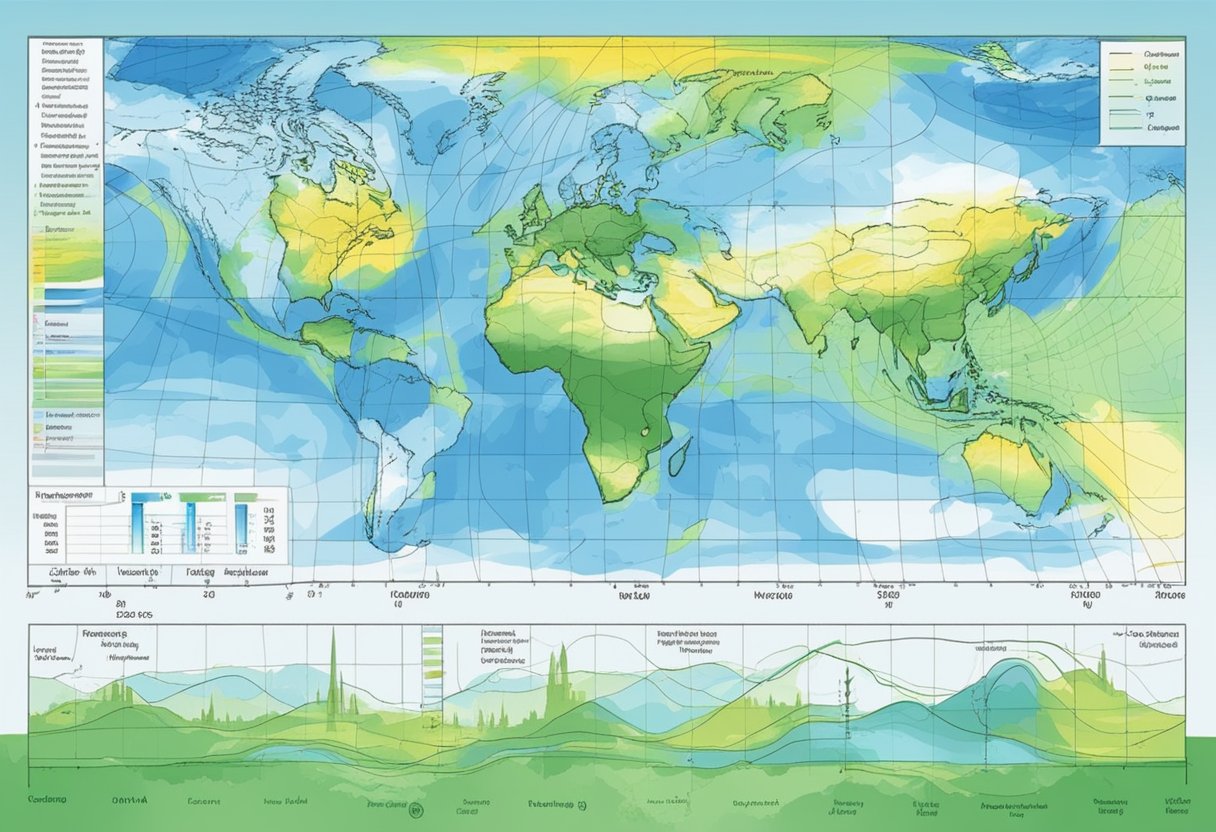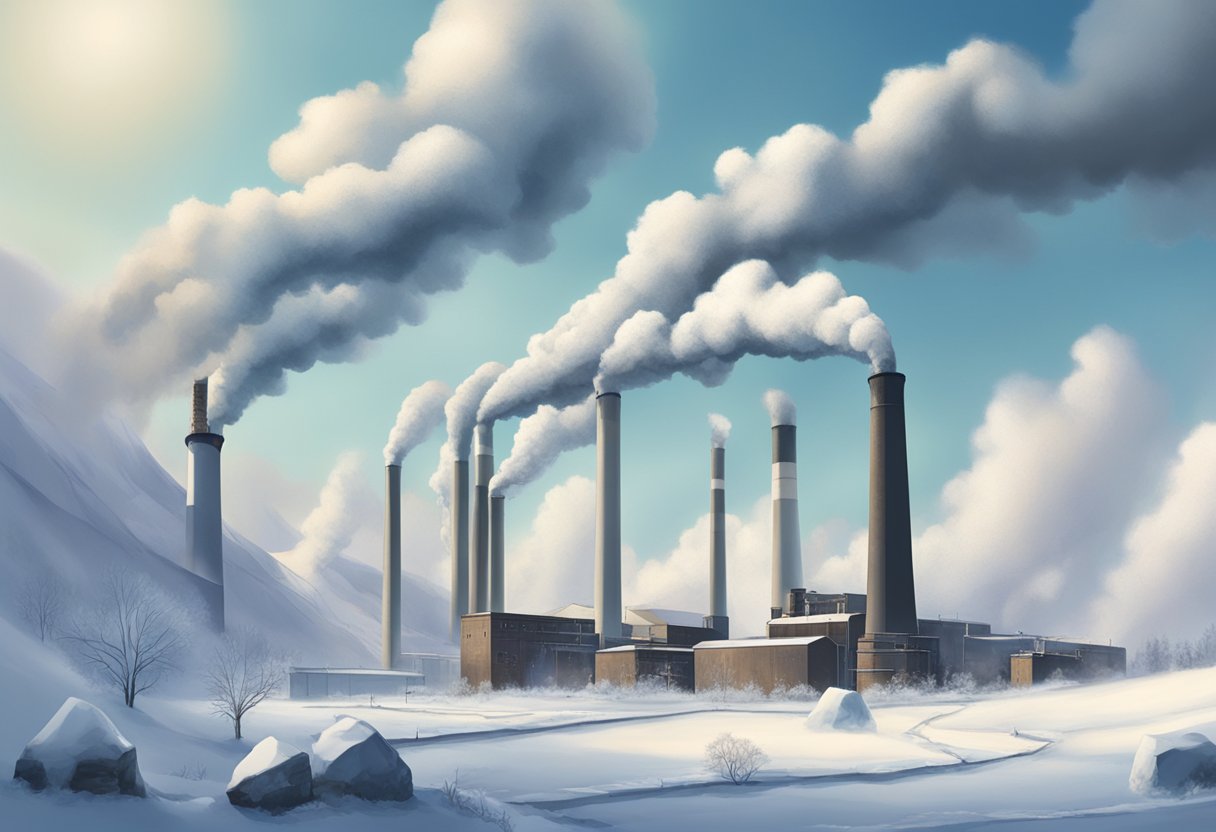Climate change and global warming are two of the most pressing issues facing our planet today.
The scientific consensus is that human activities, particularly the burning of fossil fuels, are the primary cause of these phenomena.
The science behind climate change and global warming is complex, but it is also well-established and widely accepted by the scientific community.
One of the key drivers of climate change is the increase in greenhouse gases in the atmosphere.
These gases, such as carbon dioxide and methane, trap heat from the sun and cause the Earth’s temperature to rise.
This rise in temperature has a number of effects, including melting ice caps, rising sea levels, and more frequent and severe weather events.
The evidence for these effects is clear and well-documented, with numerous studies and reports providing compelling data on the impact of climate change.
Despite the overwhelming evidence, there are still those who deny the reality of climate change and global warming.
However, the scientific consensus is clear: climate change is real, it is caused by human activities, and it poses a serious threat to our planet and our way of life.
It is up to all of us to take action to address this issue and work towards a sustainable future for ourselves and future generations.
The Mechanisms of Climate Change

The Greenhouse Effect: Earth’s Thermal Blanket
The greenhouse effect is a natural process that helps regulate the Earth’s temperature.
It is caused by the presence of certain gases in the atmosphere, such as carbon dioxide (CO2), methane (CH4), and water vapor (H2O).
These gases trap heat from the sun and prevent it from escaping back into space, much like a blanket traps body heat.
This process is essential for life on Earth, as it keeps the planet warm enough to support life.
However, human activities have increased the concentration of greenhouse gases in the atmosphere, particularly CO2, which is released through the burning of fossil fuels such as coal, oil, and gas.
This increase in greenhouse gases has caused the planet to warm at an unprecedented rate, leading to climate change and global warming.
Human Activities and Their Impact on Climate
Human activities have had a profound impact on the Earth’s climate.
The burning of fossil fuels, deforestation, and other activities have increased the concentration of greenhouse gases in the atmosphere, leading to global warming and climate change.
The Intergovernmental Panel on Climate Change (IPCC) has stated that it is extremely likely that human activities have been the dominant cause of global warming observed since the mid-20th century.
Other human activities that contribute to climate change include land-use changes, such as urbanization and agriculture, and the release of other pollutants, such as black carbon, which can accelerate the melting of snow and ice.
Natural vs. Anthropogenic Influences
While natural factors, such as volcanic eruptions and changes in solar radiation, have influenced the Earth’s climate in the past, they cannot explain the current warming trend.
The IPCC has concluded that it is extremely likely that human activities have been the dominant cause of global warming observed since the mid-20th century.
It is important to note that while natural factors can influence the Earth’s climate, they do not negate the impact of human activities.
In fact, the current warming trend is occurring at a rate that cannot be explained by natural factors alone.
Evidence of Climate Change: From Past to Present

Climate change has been an ongoing phenomenon that has been occurring for millions of years. However, the current rate of warming is happening at an unprecedented rate not seen in the past 10,000 years 1. According to the Intergovernmental Panel on Climate Change (IPCC), human activity is the main driver of climate change 1. In this section, we will explore the evidence of climate change from past to present.
Historical Climate Data and Trends
Historical climate data and trends provide insight into how climate has changed over time.
Scientists have been able to gather information about past climates through various methods, including ice cores, tree rings, and coral reefs 2.
These methods have allowed scientists to reconstruct temperature and precipitation patterns from hundreds to thousands of years ago 2.
Observing Changes: Ice Cores, Tree Rings, and Coral Reefs
Ice cores, tree rings, and coral reefs provide valuable information about past climate changes.
Ice cores are cylinders of ice drilled from glaciers and ice sheets that contain trapped air bubbles and other materials that can be analyzed to reveal information about past temperatures, atmospheric composition, and other climate variables 3.
Tree rings can provide information about past temperature and precipitation patterns, as well as other climate variables such as drought and fire frequency 4.
Coral reefs can also provide information about past climate changes, as their growth patterns can reveal changes in sea level and temperature 5.
Modern-Day Indicators: Rising Temperatures and Sea Levels
Modern-day indicators of climate change include rising temperatures and sea levels.
According to NASA, the current warming trend is different because it is clearly the result of human activities since the mid-1800s, and is proceeding at a rate not seen over many recent millennia 6.
Rising temperatures have led to melting glaciers and ice sheets, which in turn have contributed to rising sea levels 6.
In addition, sea levels have risen due to thermal expansion of seawater, which occurs when water warms and expands 6.
Footnotes
Consequences of Global Warming: A Closer Look

Global warming has far-reaching consequences that affect the planet’s climate systems, ecosystems, and human societies. In this section, we will examine the most significant consequences of global warming.
Extreme Weather Events and Their Increasing Frequency
One of the most visible effects of global warming is the increase in the frequency and intensity of extreme weather events.
Heatwaves, droughts, hurricanes, and floods are becoming more common and more severe. According to the National Oceanic and Atmospheric Administration (NOAA), the United States alone has experienced 22 weather and climate disasters that caused over $1 billion in damages each in 2020.
Ecosystems at Risk: Coral Bleaching and Forest Fires
Global warming is also putting many ecosystems at risk.
Coral reefs are particularly vulnerable to the warming of the oceans. As temperatures rise, corals expel the algae that live in their tissues, causing them to turn white, or bleach. This process weakens the corals and can lead to their death.
Forest fires are another consequence of global warming. As temperatures rise, forests become drier and more susceptible to fires.
Socioeconomic Impacts: Agriculture, Health, and Migration
Global warming has significant socioeconomic impacts. Changes in temperature and precipitation patterns can affect agriculture and food production.
For example, droughts can reduce crop yields, and floods can destroy crops. Global warming can also affect human health.
Heatwaves can cause heatstroke and other heat-related illnesses, and the spread of disease-carrying insects like mosquitoes can increase. Finally, global warming can lead to migration as people are forced to leave their homes due to rising sea levels, droughts, and other climate-related disasters.
In summary, global warming has far-reaching consequences that affect the planet’s climate systems, ecosystems, and human societies. Extreme weather events, coral bleaching, forest fires, agriculture, health, and migration are just a few examples of the consequences of global warming.
The Role of Technology in Understanding and Combating Climate Change

Climate change is one of the biggest challenges of our time, and technology is playing a crucial role in understanding and combating it. Here are some of the ways technology is helping us tackle climate change.
Satellite Technology and Climate Observation
Satellites have revolutionized our ability to observe and monitor the Earth’s climate. They provide us with a wealth of data on a range of climate variables, such as temperature, precipitation, and sea level.
This data is crucial for understanding how the climate is changing and for predicting future changes.
Satellites are also used to monitor the health of the Earth’s ecosystems. For example, they can detect changes in vegetation cover, which can be an indicator of drought or deforestation. This information can help us to identify areas that are at risk and take action to protect them.
AI and Machine Learning in Climate Prediction and Analysis
Artificial intelligence (AI) and machine learning (ML) are powerful tools for climate prediction and analysis. They can be used to analyze large amounts of data and identify patterns and trends that would be difficult for humans to detect.
For example, AI and ML can be used to analyze climate data from satellites and other sources to predict changes in weather patterns and extreme weather events. They can also be used to analyze the impact of climate change on ecosystems and human populations.
Renewable Energy Technologies: Solar, Wind, and Beyond
Renewable energy technologies, such as solar and wind power, are crucial for reducing greenhouse gas emissions and combating climate change.
These technologies have advanced rapidly in recent years, making them more efficient and cost-effective.
Solar energy, for example, is now one of the cheapest sources of electricity in many parts of the world. Wind power is also becoming increasingly competitive with fossil fuels. Other renewable energy technologies, such as geothermal and tidal power, are also showing great promise.
Innovative Cross-Disciplinary Approaches to Mitigation

Climate change is a complex problem that requires a multi-faceted approach. Innovative cross-disciplinary approaches are emerging as a critical tool in mitigating the effects of climate change. These approaches combine knowledge from various fields to create solutions that are both effective and sustainable.
Carbon Capture and Sequestration: Bridging Technology and Nature
Carbon capture and sequestration (CCS) is a technology that captures carbon dioxide emissions from industrial processes and stores them underground. This approach bridges technology and nature by using natural geological formations to safely store carbon dioxide.
CCS has the potential to significantly reduce carbon emissions and is a promising approach to mitigating climate change.
Smart Cities and Sustainable Urban Planning
Smart cities and sustainable urban planning are emerging as key approaches to mitigating the effects of climate change. These approaches use technology to create more efficient and sustainable cities.
Smart cities use data and technology to improve energy efficiency, reduce waste, and create more livable communities. Sustainable urban planning focuses on creating cities that are designed to be sustainable, with a focus on reducing carbon emissions, improving air quality, and promoting public transportation.
The Intersection of Biology and Technology in Climate Solutions
The intersection of biology and technology is a promising area for climate solutions. Biotechnology can be used to develop new materials and processes that are more sustainable and environmentally friendly.
For example, bioplastics are a type of plastic made from renewable resources such as corn starch or sugarcane. They are biodegradable and can be used as a sustainable alternative to traditional plastics.
Bioenergy is another area where biology and technology intersect. Bioenergy uses organic matter such as plants and waste to generate energy. This approach is renewable and has the potential to significantly reduce carbon emissions.
Innovative cross-disciplinary approaches are critical to mitigating the effects of climate change. By combining knowledge from various fields, these approaches can create solutions that are both effective and sustainable.
Carbon capture and sequestration, smart cities and sustainable urban planning, and the intersection of biology and technology are just a few examples of these approaches.
As the world continues to face the challenges of climate change, it is important to continue to explore and develop new cross-disciplinary approaches to mitigate its effects.



